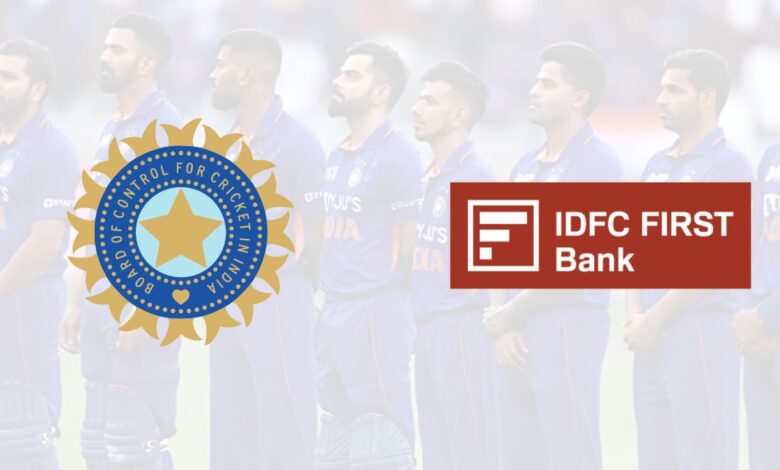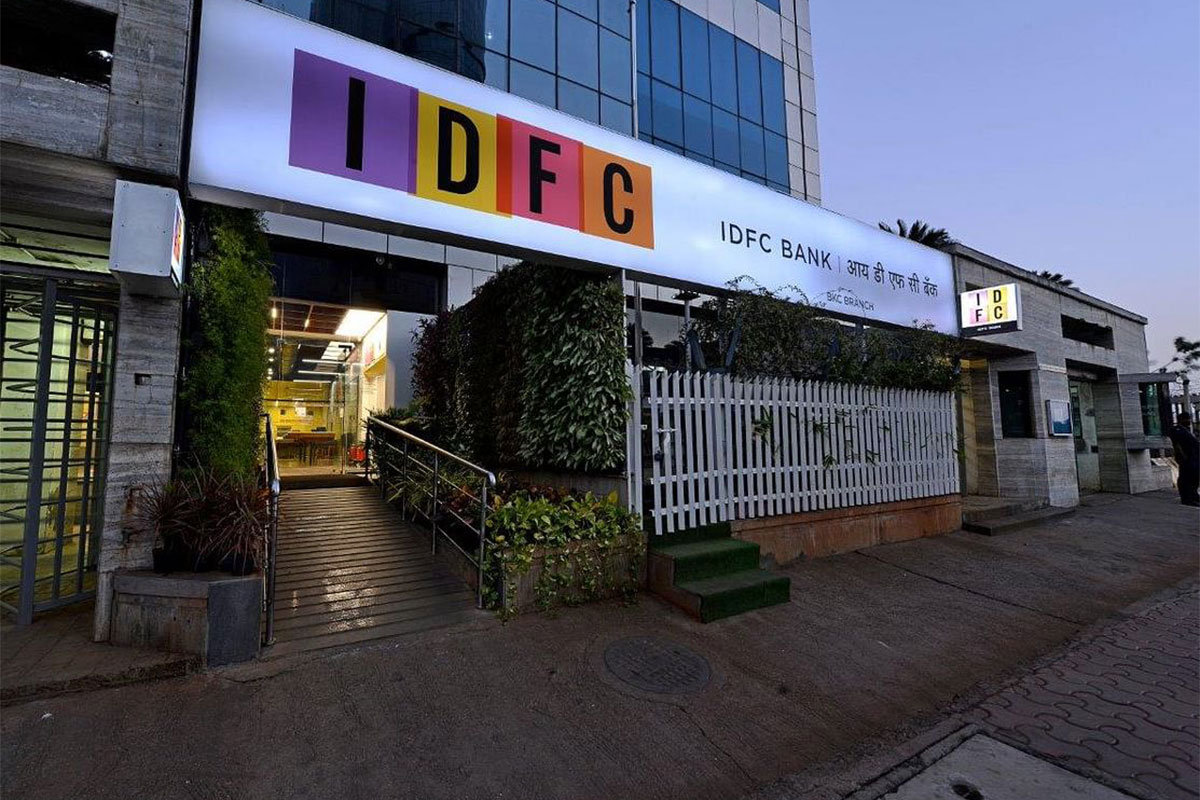IDFC First joins elite club of 10 most valuable listed banks in India

IDFC First joins elite club of 10 most valuable listed banks in India
As of September 4th, IDFC First Bank has achieved a significant milestone by becoming one of the top 10 most valuable listed banks in India. It has replaced Union Bank of India and Canara Bank in this elite club. IDFC First Bank now boasts a market capitalization (MCap) of Rs 65,325 crore, making it one of the most valuable banks in the country.
Here’s a ranking of the top 10 most valuable listed banks in India by their market capitalization:
1. HDFC Bank – Rs 12 lakh crore
2. ICICI Bank – Rs 6.77 lakh crore
3. State Bank of India (SBI) – Rs 5.14 lakh crore
4. Kotak Mahindra Bank
5. Axis Bank
6. IndusInd Bank
7. Bank of Baroda
8. IDBI Bank
9. Punjab National Bank
10. IDFC First Bank – Rs 65,325 crore.
IDFC First Bank’s shares have been on an impressive run, reaching a record high of Rs 98.99 each. This upward trend has continued for four consecutive trading sessions as of September 4th. Notably, the bank has seen a remarkable 67 percent surge in its share price this year, outpacing all other listed banks in both the private and state-run sectors.
Several factors have contributed to the bullish trading in IDFC First Bank’s stock:
1. Merger with IDFC: The bank’s impending merger with IDFC has generated positive sentiment among investors. Mergers often lead to synergies and improved operational efficiencies, which can be seen as favorable developments by the market.

2. Inclusion in MSCI Global Standard Index: On September 1st, IDFC First Bank was included in the MSCI Global Standard Index. This inclusion has the potential to attract significant investments, estimated at approximately $170-180 million, according to analysts. Being part of this index can make the bank more appealing to global investors.
3. Investor Interest: On September 4th, the bank’s stock received a significant boost when Rajiv Jain of GQG acquired 17.1 crore shares, representing a 2.58 percent stake in the bank. This sizable investment, totaling about Rs 1,527 crore, indicated strong investor confidence in the bank’s future prospects.
In summary, IDFC First Bank’s shares have been performing exceptionally well, driven by the anticipation of its merger, inclusion in the MSCI Global Standard Index, and increased investor interest. These developments have contributed to its impressive stock price performance, making it the leading gainer among all listed banks in India this year.
While IDFC First Bank has garnered enthusiasm from many investors due to its recent performance, some analysts are adopting a more cautious stance as they closely monitor the bank’s ongoing developments. Despite the bank’s strong show on various financial metrics, there is a lingering curiosity about the sustainability of its current momentum. A significant point of interest for analysts is the perceived shift in the bank’s strategic focus under CEO V. Vaidyanathan. Previously emphasizing growth, there appears to be a noticeable shift towards a more balanced approach that takes both growth and profitability into account.
One positive aspect that has contributed to investor enthusiasm is the bank’s robust Net Interest Margin (NIM), which reflects the profitability of its core banking operations. Additionally, IDFC First Bank has demonstrated a strong growth profile, even in the face of market challenges. This growth trajectory has likely played a role in the bank’s impressive stock performance.
On the asset quality front, the bank has maintained a healthy position, indicating its effectiveness in managing non-performing assets and credit risks. However, there have been challenges related to certain financial metrics. The bank’s Return on Assets (RoA) and Return on Equity (RoE) have been impacted by an elevated cost-to-income ratio. As analysts continue to scrutinize these factors, the sustainability of IDFC First Bank’s momentum remains a topic of interest and discussion in the financial community.
IDFC First Bank has reported impressive financial results for the June quarter, showcasing strong performance in several key areas. Notably, the bank saw a substantial 36 percent year-on-year increase in net interest income, along with a significant 49 percent surge in other income. This robust financial performance translated into a remarkable 61 percent growth in net profit, although provisions also witnessed a significant rise of 55 percent compared to the previous year. Operating expenses also increased by 37 percent during this period.
One notable improvement is in the bank’s Return on Assets (RoA) and Return on Equity (RoE), which increased to 1.25 percent and 11.78 percent, respectively. This demonstrates the bank’s ability to generate higher returns on its assets and equity compared to the previous year when RoA was at 0.97 percent and RoE was at 8.96 percent. However, it’s important to note that the cost-to-income ratio remained elevated at 71 percent during the June quarter, persisting for more than two years.
While the rise in operating expenses and provisioning has raised some concerns among investors about the bank’s ability to reward shareholders, there is optimism in the banking community. Positive sentiment is rooted in the anticipation of improvements in return on equity and return on assets. Analysts believe that the bank’s management is poised for enhanced growth in its loan portfolio while simultaneously improving asset quality, a trend that has been evident over the past four quarters. They expect the bank’s cost-to-income ratio to begin moderating down to 55 percent in the next quarter.
The bank’s management appears confident in its outlook, emphasizing its commitment to addressing challenges and seizing opportunities with effective execution according to its stated plans. Analysts remain optimistic about the bank’s performance in the foreseeable future, citing the size of opportunities and the bank’s track record in executing its strategies, although they chose to remain anonymous in their assessment.
IDFC First Bank has demonstrated significant growth in its advances, reporting a remarkable 25 percent increase compared to the previous year. In addition to this, the bank’s deposits surged by an impressive 44 percent. Notably, among all listed banks, IDFC First Bank ranked third in terms of advance growth, and its deposit growth was the most significant.
One noteworthy aspect is the bank’s Current Account and Savings Account (CASA) ratio, which stood at 46.47 percent. This CASA ratio is higher than that of larger banks such as State Bank of India, Axis Bank, HDFC Bank, and ICICI Bank, highlighting the bank’s strength in attracting current and savings account deposits.
Analysts have observed a substantial improvement in the bank’s retail business, with a positive Return on Assets (RoA) of approximately 1.15 percent projected for FY23. This is a notable turnaround from negative figures in FY22 and FY21. Additionally, the bank has shown enhanced asset quality, particularly in terms of customer quality at onboarding and across various customer segments, instilling confidence in a sustainable trend of low credit costs.
The bank’s performance in the corporate, salaried, and government or PSU segments has also been noteworthy, with increasing momentum in the public sector. Analysts believe this momentum will gain further traction, as the bank has established a track record of profitability.
While acknowledging the bank’s detailed disclosures on asset quality, new business ventures, and segmental cost-to-income, analysts expressed a desire for more granular details, particularly regarding “other expenditure” under operating expenses and the second layer of management.
ICICI Securities has maintained an ‘add’ rating for the bank’s stock and set a target price of Rs 105 per share, valuing the stock at 2.2 times the adjusted book value estimates for March 2025. The bank’s strong visibility of stable Net Interest Margins (NIM) and improving Return on Assets (RoA), combined with a robust growth outlook, positions it favorably in an environment where systemic NIMs and RoAs are peaking, and growth is expected to moderate. As a result, the bank is anticipated to deliver one of the best Profit After Tax (PAT) Compound Annual Growth Rates (CAGRs) in its peer group for the period from FY23 to FY25.




